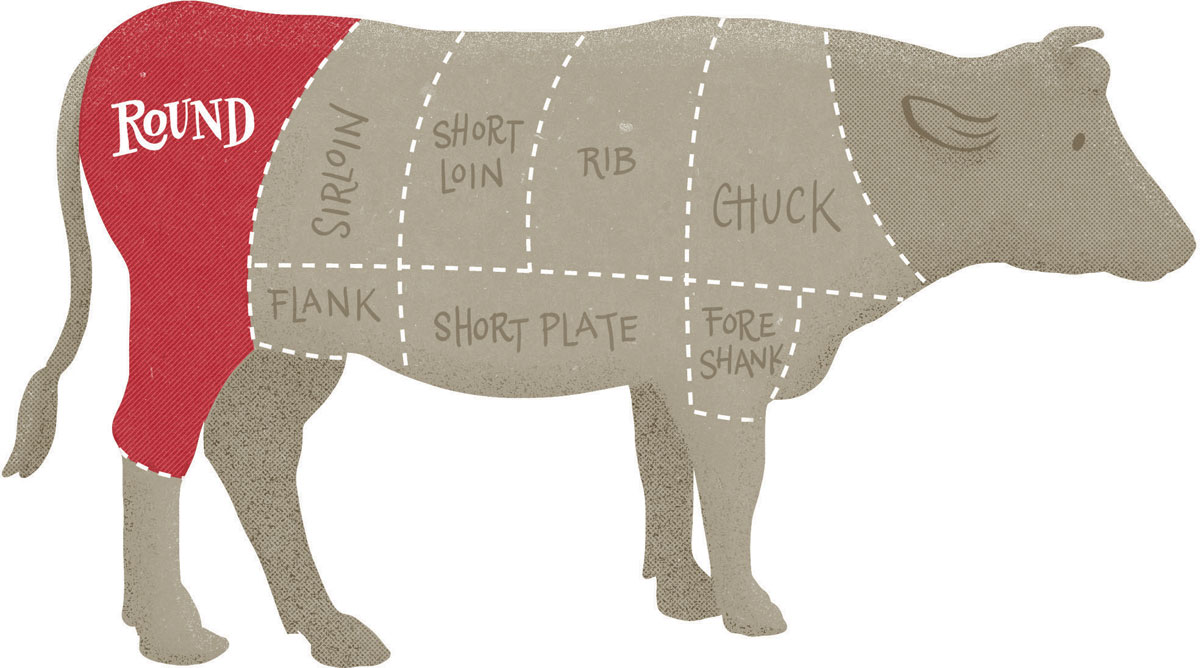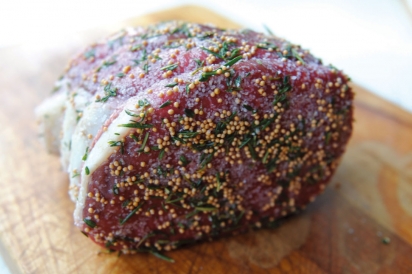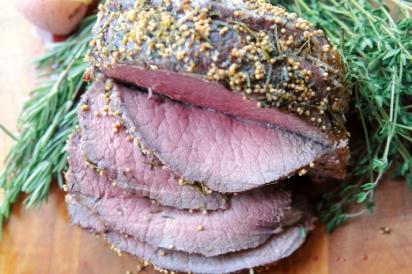Nose to Tail—The Roast
Eating “nose to tail” does not mean that you need to choke down animal organs in some kind of Fear Factor dare.
It does mean acknowledging that we live as a tribe, that a living creature has been raised with care, and gave its life, in order to nourish a community. To honor that life, and to live within the natural order of things, we do well to eat or otherwise utilize every part of the animal.
The modern-day priests of this practice are farmers like Julie and Tony Rossotti of West Marin’s Rossotti Ranch, who offer their meats at local farmers’ markets; butchers at shops like Petaluma’s Thistle Meats, who purchase and butcher whole animals, offering them to customers as fresh cuts as well as transformed into other delicacies like sausages and pates; and cooks in restaurants such as Point Reyes Station’s Osteria Stellina, where every part of whole animals is transformed into pleasure on the plate.
In this new column in Edible Marin & Wine Country, we intend to bring you recipes and cooking techniques that will give you the savoir-faire to own your place in the modern food chain, as the creative and conscious omnivore.
For this first edition of Nose to Tail, I asked some of our local pasture “pastors” what animal parts they had trouble selling during the winter months. Many responded that beef roasts from the round (a primal cut, or large section, of the hindquarters of a steer) were slow to leave the case when temperatures dip.
This makes sense, as in colder weather braised meats have long held sway. This season is prime time for the toughest meats suitable only for long braising. Tender steaks are perennially appreciated and snapped up year-round. Roasts are the muscles that land in between these opposite ends of the tenderness spectrum.
I considered this to be a lucky coincidence as, to me, nothing is more festive than a leg roast. A lamb steamship—the whole leg, including the shank—is the essence of an ancient feast and holiday tables are often graced with a glazed ham (which is a brined, sometimes smoked and then roasted pork leg roast) or a beef roast.
A roast is elegant and timeless, but quite simple to make and generally less expensive than other cuts that are much fussier to prepare. When a cut is slow to sell, it is usually priced well to entice buyers. This often only reflects that it is less familiar to most consumers, not less delicious.
HOW TO ROAST
Roasting is a dry cooking method that enables you to cook these mid-tender cuts of lamb, pork, beef or other large animals to flavorful succulence.
For this recipe, I selected a beef top round roast, which the butcher can cut to size for a few or a large group (I like to cook enough to last a few meals). It is always nice to have the roast tied for you so that it cooks evenly.
As an important first step, temper the meat by taking it out of the refrigerator for an hour or so before cooking so that it reaches room temperature all the way through. This will allow the roast to cook evenly.
Preheat oven to 325°.
Season the roast well with salt (I prefer kosher salt), pepper and herbs, if you like. When you think you have enough salt, add a touch more. You can also season the roast the night before.
Place the seasoned roast into a roasting pan. At this point, you might want to add some vegetables, like red potatoes or hearty mushrooms, into the roasting pan so that they cook in the umami of pan drippings, and you’ll have one less step for dinner.
Cook this lean cut low and slow until an internal thermometer reads 135°. This will be medium-rare after it rests. Don’t ruin this cut by overcooking it to a tough medium or well done. That is an order.
LET IT REST for at least 15 minutes to allow the juices to be reabsorbed into the meat, and it will continue to cook to medium-rare. This is also an order.
You may serve this roast gloriously naked, or you could make a pan sauce with the drippings by deglazing the pan with wine, adding butter and cooking on the stovetop until it is reduced by half, or to the consistency that appeals to you. Or you could make a briny and herbaceous salsa verde to accompany the meat.
Carved at the table, with the juices running out, and served with a potato, soft down to the center, is ceremonial in the best way, bringing a sense of occasion to your table.
Leftovers? This meat will be fantastic on a sandwich with horseradish mayonnaise or in a salad of spicy greens the next day.
Cook’s notes: You could use this same technique with a leg of lamb (cook to an internal temperature of 150°), pork leg roast (aka fresh ham; cook to an internal temperature of 160°) or any of the following beef cuts: eye of round, round tip roast, upper loin roast and ball tip roast (though you may want to marinate this cut). When you master the methods and techniques of cooking, you can apply those skills to any ingredient.
Our tribe needs more savvy and curious home cooks. Cooking is a daily act of love and a roast is a hearty expression of that love.
Marissa La Brecque is a cookbook author and co-founder of The Butcher’s Guild, a national trade organization preserving the noble craft. TheButchersGuild.org. She is also the owner of Yoga At The Mercantile, Contra Costa County’s most remote yoga studio.







